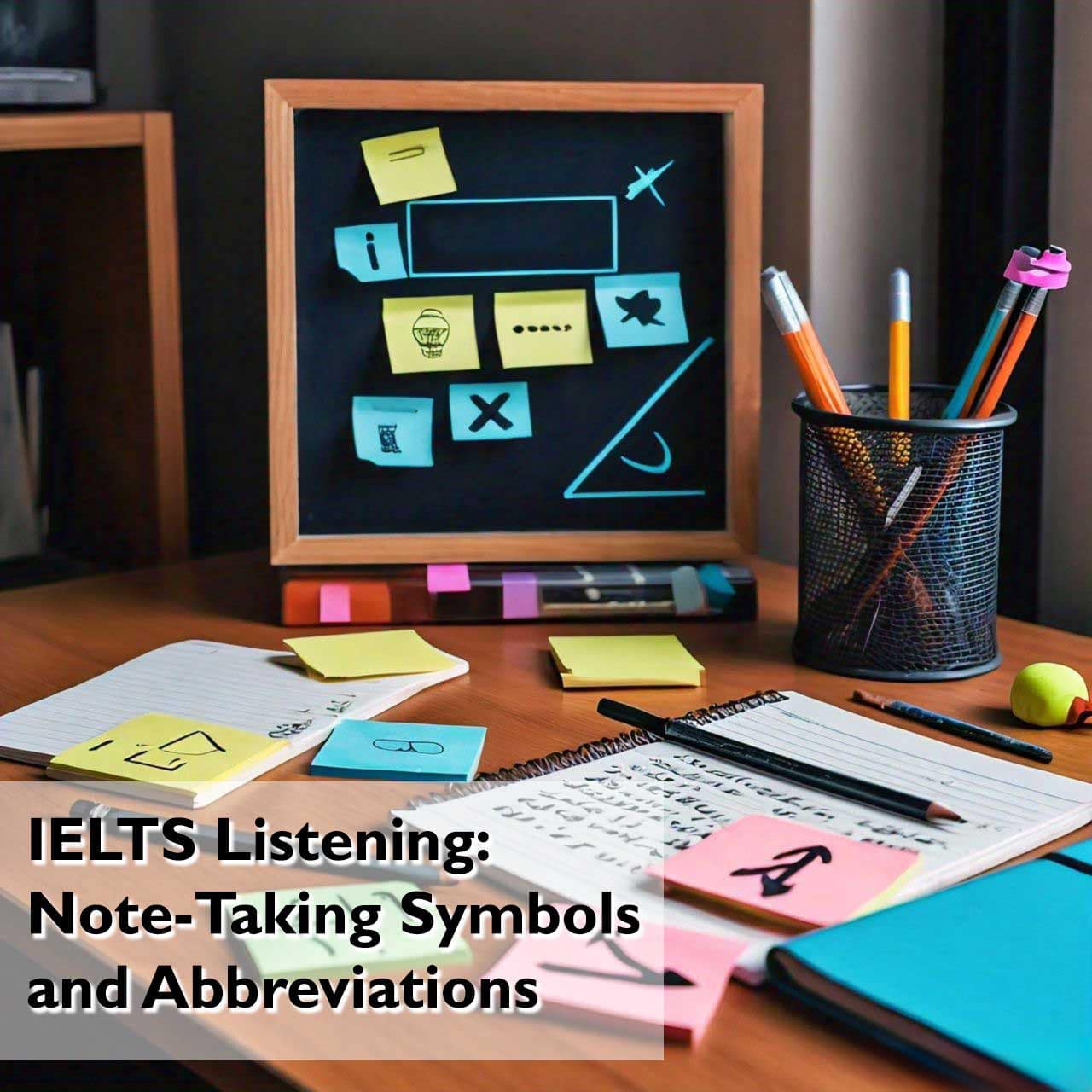The IELTS Listening test can be a daunting challenge for many candidates. It requires not only a good command of the English language but also the ability to quickly and accurately take notes. One effective way to improve your performance in the listening section is by mastering the use of note-taking symbols and abbreviations. In this blog post, we’ll explore how to utilize these tools to enhance your listening skills and boost your IELTS score.
Table of Contents
Why Note-Taking is Crucial in IELTS Listening
During the IELTS Listening test, you will listen to four recordings of native English speakers and answer a series of questions based on what you hear. The recordings may be conversations or monologues, and they can cover a variety of topics. The challenge is to understand and retain the information, which can be overwhelming given the speed and complexity of the speech.
Effective note-taking helps you:
1. Capture Key Information: Ensuring you don’t miss essential details.
2. Stay Organized: Keeping your thoughts structured for easy reference.
3. Improve Accuracy: Reducing the likelihood of mistakes when answering questions.
Basic Principles of Note-Taking
Before diving into symbols and abbreviations, it’s important to understand some basic principles of note-taking:
– Listen for Key Points: Focus on main ideas, facts, numbers, and names.
– Be Concise: Write down only what is necessary.
– Use Your Own Style: Develop a system that works for you.
Common Symbols and Their Meanings
Symbols can significantly speed up your note-taking process. Here are some commonly used ones:
– &: And
– @: At
– : Number
– %: Percent
– →: Leads to, causes
– ↔: Connected to, related to
– ↑: Increase, rise
– ↓: Decrease, fall
– =: Equals, is the same as
– ≠: Does not equal, is different from
– $: Money, cost, price
– ♂: Male
– ♀: Female
These symbols help you quickly jot down relationships, directions, and changes without writing full words.
Useful Abbreviations
Abbreviations can save time and space in your notes. Here are some common ones:
– w/: With
– w/o: Without
– b/c: Because
– e.g.: For example
– i.e.: That is
– etc.: And so on
– gov.: Government
– edu.: Education
– info.: Information
– dept.: Department
– approx.: Approximately
Customizing Your System
While standard symbols and abbreviations are useful, creating your own can be even more effective. Consider the following tips:
– Personalize: Tailor symbols and abbreviations to your needs and preferences.
– Practice: Regularly use your system to become familiar and quick with it.
– Consistency: Use the same symbols and abbreviations consistently to avoid confusion.
Practice Makes Perfect
Improving your note-taking skills requires practice. Here are some strategies:
1. Practice with IELTS Samples: Use past IELTS listening tests to practice note-taking.
2. Listen to English Media: Regularly listen to English podcasts, news, and lectures and take notes.
3. Review and Reflect: After practicing, review your notes and reflect on how you can improve.
Final Thoughts
Mastering note-taking symbols and abbreviations can significantly enhance your performance in the IELTS Listening test. By capturing key information quickly and accurately, you will be better equipped to answer questions correctly and efficiently. Remember, the key to success is practice and consistency. So, start incorporating these techniques into your study routine, and you’ll see improvement in no time.
Good luck with your IELTS preparation!



